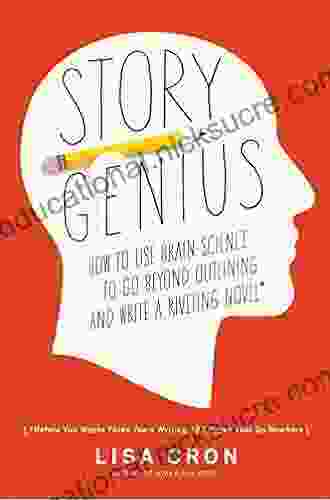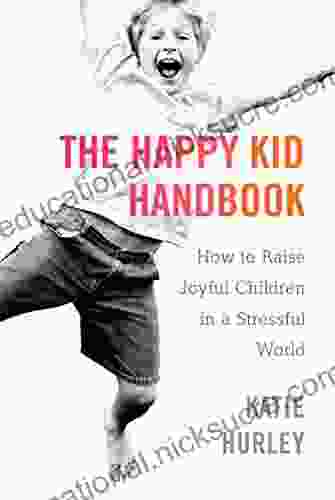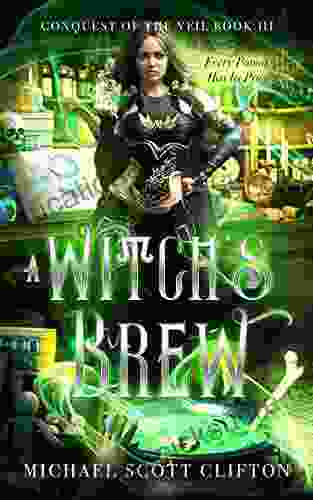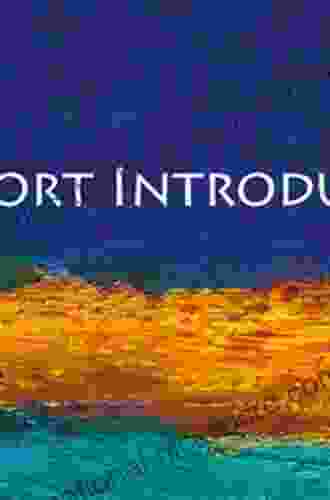How to Use Brain Science to Go Beyond Outlining and Write a Riveting Novel Before

4.6 out of 5
| Language | : | English |
| File size | : | 8419 KB |
| Text-to-Speech | : | Enabled |
| Screen Reader | : | Supported |
| Enhanced typesetting | : | Enabled |
| Word Wise | : | Enabled |
| Print length | : | 283 pages |
Step into the realm of novel writing, where imagination reigns supreme and stories unfold from the depths of our minds. For many writers, outlining serves as a roadmap, guiding them through the labyrinth of plot and character development. However, what if there was a way to bypass outlining altogether and tap into the boundless creativity of your brain?
Neuroscience, the study of the brain and nervous system, offers invaluable insights into the writing process. By understanding how our brains process and generate language, we can harness this knowledge to craft compelling narratives that resonate with readers on a profound level.
In this comprehensive guide, we'll delve into the neuroscience of storytelling and provide practical techniques to help you:
- Bypass outlining and tap into your subconscious mind
- Generate captivating plots and develop memorable characters
- Craft a story that flows effortlessly from your fingertips
- Captivate readers and leave a lasting impression
Understanding the Brain's Role in Storytelling
Our brains are hardwired for storytelling. From a young age, we are exposed to stories that shape our understanding of the world. These stories activate various brain regions, including the:
- Prefrontal cortex: Responsible for planning, decision-making, and working memory
- Temporal lobes: Involved in language processing, memory, and emotional responses
- Limbic system: Associated with emotions, motivation, and reward
When we read or write a story, these brain regions work together to create a vivid and immersive experience. The prefrontal cortex processes the plot, characters, and setting. The temporal lobes decode the language and evoke emotions. The limbic system responds to the story's emotional content and motivates us to continue reading.
Unlocking Your Subconscious Mind
Outlining can be a useful tool, but it can also stifle creativity by imposing a rigid structure on your imagination. Instead of relying solely on outlining, consider tapping into the vast reservoir of your subconscious mind.
The subconscious mind is a storehouse of memories, experiences, and emotions. It is also a source of boundless creativity. By accessing your subconscious, you can unlock a deeper level of storytelling and generate ideas that you never thought possible.
Here are some techniques to help you access your subconscious mind:
- Freewriting: Write whatever comes to mind, without judgment or censorship. Let your thoughts flow freely onto the page.
- Mind mapping: Create a visual representation of your ideas by connecting words and phrases to each other. Allow your mind to wander freely and make unexpected connections.
- Dream journaling: Keep a record of your dreams. The subconscious mind is often active during sleep, and dreams can provide valuable insights into your inner thoughts and feelings.
- Meditation: Meditation helps to quiet the mind and create a space for introspection. During meditation, focus on your breath and allow your thoughts to flow freely.
By engaging in these practices, you can tap into the subconscious mind's vast creative potential and generate novel ideas for your story.
Crafting a Captivating Plot
A captivating plot is the backbone of any successful novel. It keeps readers engaged, drives the story forward, and creates a sense of urgency and anticipation.
Neuroscience research has identified several key elements that make a plot compelling:
- Surprise: Unexpected twists and turns keep readers on the edge of their seats.
- Suspense: Building tension throughout the story creates a sense of anticipation and excitement.
- Resolution: A satisfying resolution provides closure and leaves readers feeling satisfied.
- Emotional resonance: Plot events that evoke strong emotions in readers make the story more memorable and impactful.
To craft a compelling plot, follow these neuroscience-based tips:
- Start with a strong hook: The opening lines of your novel should immediately capture the reader's attention and set the stage for the story.
- Introduce conflict early on: Conflict is the driving force of a story. Introduce a conflict that is both personal and relatable.
- Build suspense gradually: Keep readers guessing about what will happen next by slowly revealing information and creating tension.
- Include unexpected twists and turns: Surprise readers with unexpected plot developments, but make sure they are logical and contribute to the overall story.
- Provide a satisfying resolution: Tie up loose ends and provide a sense of closure, but leave room for interpretation and discussion.
By incorporating these principles into your plot, you can create a story that captivates readers and keeps them turning pages.
Developing Memorable Characters
Characters are the heart and soul of any novel. They drive the story forward, evoke emotions in readers, and leave a lasting impression.
Neuroscience research has shown that readers identify with characters who are:
- Relatable: Readers connect with characters who share their values, experiences, or struggles.
- Complex: Characters with flaws and contradictions are more interesting and memorable.
- Emotive: Characters who evoke strong emotions in readers make a lasting impact.
- Driven: Characters with clear goals and motivations are more engaging and compelling.
To create memorable characters, follow these neuroscience-based tips:
- Understand your characters' motivations: What drives your characters to act? What are their hopes, fears, and dreams?
- Develop their backstories: The past experiences of your characters shape their personalities and actions.
- Give them flaws: No one is perfect. Flaws make characters more relatable and interesting.
- Evoke emotions in your readers: Make your characters experience a range of emotions, from joy to sadness to anger.
- Keep them consistent: Characters should act and react in a way that is consistent with their personalities.
By investing time and effort in developing your characters, you will create a cast of unforgettable individuals that readers will come to cherish.
Crafting a Story That Flows Effortlessly
A well-written novel should flow effortlessly from your fingertips, keeping readers immersed in the story from the first page to the last.
Neuroscience research has identified several key factors that contribute to a smooth and engaging reading experience:
- Clarity: The language should be clear and concise, allowing readers to easily understand the story.
- Pacing: The pace should vary throughout the story, with moments of tension and excitement balanced by moments of reflection and respite.
- Sensory details: Vivid sensory details create an immersive experience for the reader.
- Emotional connection: The story should evoke emotions in the reader, creating a sense of empathy and engagement.
- Flow state: The writing process should be effortless and enjoyable, allowing you to fully immerse yourself in the story.
To create a story that flows effortlessly, follow these neuroscience-based tips:
- Write in a clear and concise style: Use active voice, strong verbs, and specific nouns.
- Vary the pace of your story: Alternate between scenes of action and dialogue with moments of reflection and introspection.
- Use sensory details to create an immersive experience:
4.6 out of 5
| Language | : | English |
| File size | : | 8419 KB |
| Text-to-Speech | : | Enabled |
| Screen Reader | : | Supported |
| Enhanced typesetting | : | Enabled |
| Word Wise | : | Enabled |
| Print length | : | 283 pages |
Do you want to contribute by writing guest posts on this blog?
Please contact us and send us a resume of previous articles that you have written.
 Fiction
Fiction Non Fiction
Non Fiction Romance
Romance Mystery
Mystery Thriller
Thriller SciFi
SciFi Fantasy
Fantasy Horror
Horror Biography
Biography Selfhelp
Selfhelp Business
Business History
History Classics
Classics Poetry
Poetry Childrens
Childrens Young Adult
Young Adult Educational
Educational Cooking
Cooking Travel
Travel Lifestyle
Lifestyle Spirituality
Spirituality Health
Health Fitness
Fitness Technology
Technology Science
Science Arts
Arts Crafts
Crafts DIY
DIY Gardening
Gardening Petcare
Petcare Chris Dowhan
Chris Dowhan Sam Maggs
Sam Maggs Dan Allan
Dan Allan Stacey Lee
Stacey Lee Melody Groves
Melody Groves Arthur Kleinman
Arthur Kleinman Monica Clyde
Monica Clyde Paul Seabright
Paul Seabright Richard Twiss
Richard Twiss Margot Kahn
Margot Kahn Walter Martin
Walter Martin Vanessa A P
Vanessa A P Carolyn Savage
Carolyn Savage Garth Nix
Garth Nix David Sowell
David Sowell Andrew Moore
Andrew Moore Michelle Madow
Michelle Madow Charlie Jones
Charlie Jones Tina H Boogren
Tina H Boogren Claire Ahn
Claire Ahn Fatime Losonci
Fatime Losonci V S Ramachandran
V S Ramachandran Chelsea Johnson
Chelsea Johnson Peter D Jeans
Peter D Jeans Jordan Ellenberg
Jordan Ellenberg Stephanie V W Lucianovic
Stephanie V W Lucianovic Debbie Felkins Tamez
Debbie Felkins Tamez Robert M Schoch
Robert M Schoch James R Hansen
James R Hansen Julie Lythcott Haims
Julie Lythcott Haims Andrew Lang
Andrew Lang Bryan Mellonie
Bryan Mellonie John R Anderson
John R Anderson Howard Thurman
Howard Thurman J P Mcevoy
J P Mcevoy Elizabeth Walter
Elizabeth Walter K L Walther
K L Walther The Car Crash Detective
The Car Crash Detective Rainer Martens
Rainer Martens K A Linde
K A Linde Marianne Ryan
Marianne Ryan Nicholas D Souza
Nicholas D Souza Carolyn Coker Ross
Carolyn Coker Ross Mark Cannizzaro
Mark Cannizzaro Thomas F Hornbein
Thomas F Hornbein Jerusha Clark
Jerusha Clark Madeleine Roux
Madeleine Roux Gila Leiter
Gila Leiter Guy Windsor
Guy Windsor Jay Arthur
Jay Arthur Helene Henderson
Helene Henderson Jaimal Yogis
Jaimal Yogis Brock Lesnar
Brock Lesnar Daniel Tammet
Daniel Tammet Leigh Bernacchi
Leigh Bernacchi Lisa Bevere
Lisa Bevere Erin Macpherson
Erin Macpherson William Gurstelle
William Gurstelle Robert Holdstock
Robert Holdstock William Ma
William Ma Rosalind Miles
Rosalind Miles Larry Jacobson
Larry Jacobson Loris Chen
Loris Chen Daniel Mark Brown
Daniel Mark Brown John Helyar
John Helyar Delphi Classics
Delphi Classics Carl Hart
Carl Hart Andrew Hempstead
Andrew Hempstead Rosita Boland
Rosita Boland Kris Holloway
Kris Holloway Andy Ankowski
Andy Ankowski Behrouz Moemeni
Behrouz Moemeni Damon B Akins
Damon B Akins Portia Macintosh
Portia Macintosh Leslie Klenke
Leslie Klenke Dennis J Stanford
Dennis J Stanford Vivien Newman
Vivien Newman Tanya Crossman
Tanya Crossman Uma Dinsmore Tuli
Uma Dinsmore Tuli Mark Hyman
Mark Hyman Shannon Van Den Berg
Shannon Van Den Berg Kinley Macgregor
Kinley Macgregor Nelson L Schuman
Nelson L Schuman Adam Minter
Adam Minter Stephen Prata
Stephen Prata Akil Palanisamy
Akil Palanisamy Mikael Krief
Mikael Krief Charles Darwin
Charles Darwin Sally Bjornsen
Sally Bjornsen Claiborne Young
Claiborne Young Dan Werb
Dan Werb Martin Woodward
Martin Woodward Betty Smith
Betty Smith Dustin Howe
Dustin Howe Mark Vella
Mark Vella E K Johnston
E K Johnston Daniel D Fox
Daniel D Fox Shannon Jensen
Shannon Jensen Kuldeep Singh
Kuldeep Singh Teresa Palmer
Teresa Palmer Emilie Bailey
Emilie Bailey Pawel Guziejko
Pawel Guziejko Teresa M Twomey
Teresa M Twomey Mark Needham
Mark Needham Sally Cook
Sally Cook Timothy Gordon
Timothy Gordon Mallory Striesfeld Ms Lpc
Mallory Striesfeld Ms Lpc Dawn Isaac
Dawn Isaac Antipodean Writer
Antipodean Writer Tiffany Harelik
Tiffany Harelik Rolf Dobelli
Rolf Dobelli Jennifer M Rosner
Jennifer M Rosner Robert Kurson
Robert Kurson Stephon Alexander
Stephon Alexander Nancy Wainer Cohen
Nancy Wainer Cohen Andrew Warnes
Andrew Warnes Kirk Goldsberry
Kirk Goldsberry Omar D Lewis Sr
Omar D Lewis Sr Morten Lund
Morten Lund Clinton Anderson
Clinton Anderson Chris Mcmullen
Chris Mcmullen Luca Brambilla
Luca Brambilla Ilene And Gary Modica
Ilene And Gary Modica Sebastian Deterding
Sebastian Deterding Lauren James
Lauren James Slavka Bodic
Slavka Bodic Andrew M Greeley
Andrew M Greeley Brianne Donaldson
Brianne Donaldson Anthony Bishop Lmft
Anthony Bishop Lmft Patrick Barrett
Patrick Barrett Andrew X Pham
Andrew X Pham Tom Bertrand
Tom Bertrand Andrew Shaw
Andrew Shaw Brian Grossenbacher
Brian Grossenbacher C Todd Lombardo
C Todd Lombardo Jeffro Johnson
Jeffro Johnson Gabriel Weinberg
Gabriel Weinberg Carla Hannaford
Carla Hannaford Sam Fels
Sam Fels Rory Stewart
Rory Stewart Michael J Mauboussin
Michael J Mauboussin Xan Barksdale
Xan Barksdale Kevin Thomas
Kevin Thomas Miles Smeeton
Miles Smeeton Brian L Silver
Brian L Silver Linda Goldberg
Linda Goldberg Glenn Berkenkamp
Glenn Berkenkamp Neil Harman
Neil Harman Stanley L Jaki
Stanley L Jaki Hp Newquist
Hp Newquist Hope Jahren
Hope Jahren Claire Phillips
Claire Phillips Benedict Goleman
Benedict Goleman Stephen Howe
Stephen Howe Seabury Quinn
Seabury Quinn John Atherton
John Atherton Christian Heath
Christian Heath Ruta Sepetys
Ruta Sepetys James D Watson
James D Watson Jon Paschetto
Jon Paschetto George H Odell
George H Odell Timothy Ferris
Timothy Ferris Edgar H Schein
Edgar H Schein George W Hart
George W Hart Samara Caughey
Samara Caughey Andrew Zerling
Andrew Zerling Patrick Felicia
Patrick Felicia Paul Davies
Paul Davies Pseudo Nym
Pseudo Nym Tom Doak
Tom Doak W Michael Kelley
W Michael Kelley Elianor M A
Elianor M A Nadia Shammas
Nadia Shammas Dan Anderson
Dan Anderson Edmund Nequatewa
Edmund Nequatewa Shari Mezrah
Shari Mezrah Guns Ammo
Guns Ammo Dora Kurimay
Dora Kurimay Vibrant Publishers
Vibrant Publishers Andrew Robinson
Andrew Robinson Samuel Hideo Yamashita
Samuel Hideo Yamashita Maggie Ryan
Maggie Ryan John Daido Loori
John Daido Loori Eli Maor
Eli Maor Dr John Hockey
Dr John Hockey Jason William
Jason William Texes Exam Secrets Test Prep Team
Texes Exam Secrets Test Prep Team Annette K Larsen
Annette K Larsen Peter Compton
Peter Compton Catherine Gildiner
Catherine Gildiner Sadhguru
Sadhguru Lauren Conrad
Lauren Conrad T H Lain
T H Lain Michaela Deprince
Michaela Deprince James P Sethna
James P Sethna L Kathleen Mahan
L Kathleen Mahan Jonathan Bennett
Jonathan Bennett Ronald T Kneusel
Ronald T Kneusel Gordon W Green
Gordon W Green Caroline Finnerty
Caroline Finnerty Melanie Burnell
Melanie Burnell Richelle Mead
Richelle Mead Judy Ford
Judy Ford Gladstone Califf
Gladstone Califf Piero Ferrucci
Piero Ferrucci Andy Crouch
Andy Crouch W Somerset Maugham
W Somerset Maugham Educational Brain Games
Educational Brain Games Stephen James
Stephen James Kirk W Johnson
Kirk W Johnson Carl Allchin
Carl Allchin Kevin Shea
Kevin Shea Zita Grant
Zita Grant Jerry Z Muller
Jerry Z Muller Angela Berkfield
Angela Berkfield Sarah Pinborough
Sarah Pinborough William E Hearn
William E Hearn Justine Bateman
Justine Bateman Steve Lage
Steve Lage Touko Amekawa
Touko Amekawa Zhongxian Wu
Zhongxian Wu Jennifer Lw Fink Rn Bsn
Jennifer Lw Fink Rn Bsn Geraldine Woods
Geraldine Woods Janis Abrahms Spring
Janis Abrahms Spring Nick Jaffe
Nick Jaffe Daniel W Cunningham
Daniel W Cunningham Carson Mccullers
Carson Mccullers Rachel Lynn Solomon
Rachel Lynn Solomon Rhianna Pratchett
Rhianna Pratchett Nicholas J Higham
Nicholas J Higham M L Ray
M L Ray Anne Marie Scully
Anne Marie Scully Heidi Dais
Heidi Dais Michael Barela
Michael Barela Gary Todd
Gary Todd Elijah N Daniel
Elijah N Daniel Ed Rosenthal
Ed Rosenthal Michael Polanyi
Michael Polanyi Rita Jablonski
Rita Jablonski Marie Sherlock
Marie Sherlock William Mark Huey
William Mark Huey Kay Pranis
Kay Pranis Ricky Roberts Iii
Ricky Roberts Iii Andrew Thompson
Andrew Thompson Ernest Becker
Ernest Becker Mike Wells
Mike Wells Mary Sheedy Kurcinka
Mary Sheedy Kurcinka Tom Holland
Tom Holland Frances A Yates
Frances A Yates Joya Goffney
Joya Goffney Philip Reeve
Philip Reeve David Carrasco
David Carrasco Christine Pearson Casanave
Christine Pearson Casanave Emily Wibberley
Emily Wibberley Rolf Potts
Rolf Potts Jerry M Gutlon
Jerry M Gutlon Rachel Pepper
Rachel Pepper Fourth Edition Kindle Edition
Fourth Edition Kindle Edition Jennie Erin Smith
Jennie Erin Smith Jenny Randles
Jenny Randles Jon Gertner
Jon Gertner Andrew Hudson
Andrew Hudson Mark Vanhoenacker
Mark Vanhoenacker Sean B Carroll
Sean B Carroll Connie Goldsmith
Connie Goldsmith Shonda Rhimes
Shonda Rhimes Jill Squyres Groubert Phd
Jill Squyres Groubert Phd Donna Tartt
Donna Tartt J D Lenzen
J D Lenzen Stephen Cole
Stephen Cole Tim Huffman
Tim Huffman Julia Cameron
Julia Cameron Jessica Speer
Jessica Speer Sarah Digregorio
Sarah Digregorio Mawi Asgedom
Mawi Asgedom Nina Varela
Nina Varela H A Lorentz
H A Lorentz S G Taylor
S G Taylor George Washington Cable
George Washington Cable Nancy Frey
Nancy Frey Bryan Sykes
Bryan Sykes Emily Kerr
Emily Kerr Stan Tekiela
Stan Tekiela Thomas Clarkson
Thomas Clarkson Richard Bullivant
Richard Bullivant Andy Burnham
Andy Burnham Atul K Mehra
Atul K Mehra Rudy Rucker
Rudy Rucker P Anastasia
P Anastasia Slow Sprint
Slow Sprint Eddy Starr Ancinas
Eddy Starr Ancinas Marissa Meyer
Marissa Meyer Edward C Klatt
Edward C Klatt J Richard Hackman
J Richard Hackman Aristeidis Bampakos
Aristeidis Bampakos Jack David Eller
Jack David Eller Jared Benson
Jared Benson Jonathan Scott
Jonathan Scott David Jefferson
David Jefferson J K Rowling
J K Rowling Justine Bold
Justine Bold Kathrine Switzer
Kathrine Switzer Christopher Vaughan
Christopher Vaughan Master Wong
Master Wong Dave Chambers
Dave Chambers Becky Albertalli
Becky Albertalli Ehsan Masood
Ehsan Masood Sharae Moore
Sharae Moore Carl Petersen
Carl Petersen Peggy Orenstein
Peggy Orenstein Laird Hamilton
Laird Hamilton Sara T Gibbs
Sara T Gibbs Mirabai Starr
Mirabai Starr James Berry
James Berry Monty Roberts
Monty Roberts Lisa Roberts
Lisa Roberts Andrew Jamieson
Andrew Jamieson Sol Adoni
Sol Adoni Stephan Lee
Stephan Lee Michele Amitrani
Michele Amitrani Damon Wiseley
Damon Wiseley Carolyn S Schroeder
Carolyn S Schroeder Ben Foss
Ben Foss Jason R Rich
Jason R Rich Christine Carter
Christine Carter Suzanne Van Atten
Suzanne Van Atten Gordon Churchill
Gordon Churchill Christine Moore
Christine Moore Gordon Wright
Gordon Wright Judith A Cohen
Judith A Cohen Andrew H Knoll
Andrew H Knoll Madeleine L Engle
Madeleine L Engle Antonio Pigafetta
Antonio Pigafetta Michael Epperson
Michael Epperson Diane R Gehart
Diane R Gehart John Lofty Wiseman
John Lofty Wiseman Tom Chesshyre
Tom Chesshyre Jim Hardy
Jim Hardy Kent Nerburn
Kent Nerburn Bill Pennington
Bill Pennington Bronwen Skye
Bronwen Skye Gina M Biegel
Gina M Biegel Sabrina Chevannes
Sabrina Chevannes John Mcphee
John Mcphee Wendy Bryden
Wendy Bryden Ginger Scott
Ginger Scott Dawne Archer
Dawne Archer Robert Parris Moses
Robert Parris Moses Tony Ray
Tony Ray Alexander Bennett
Alexander Bennett Harvey Motulsky
Harvey Motulsky Joy Vines
Joy Vines Xavier P Hunter
Xavier P Hunter Lauren Kate
Lauren Kate Christopher O Shaughnessy
Christopher O Shaughnessy Bill Dance
Bill Dance Sheryl Feinstein
Sheryl Feinstein Jessie Cal
Jessie Cal Andrew Heywood
Andrew Heywood Cassandra Erkens
Cassandra Erkens Kevin Anderson
Kevin Anderson Nigel Calder
Nigel Calder Natalie Babbitt
Natalie Babbitt Charles Cooper
Charles Cooper John H Carroll
John H Carroll Christopher Dunn
Christopher Dunn Gordon Webster
Gordon Webster Andrew Hodges
Andrew Hodges Sue Fleming
Sue Fleming John Eberhart
John Eberhart Jen Benson
Jen Benson Jamie Thornton
Jamie Thornton Andrew J Wakefield
Andrew J Wakefield Andrew Reeves
Andrew Reeves Lucy Atkins
Lucy Atkins Michael J Thompson
Michael J Thompson Marcus Tomlinson
Marcus Tomlinson Ron Hackett
Ron Hackett Andrew Hartman
Andrew Hartman Christopher Hodapp
Christopher Hodapp Liz Prince
Liz Prince Marcos Romero
Marcos Romero Mark Mcclusky
Mark Mcclusky Bridgit Danner Lac
Bridgit Danner Lac Shannon Brown
Shannon Brown Rhonda V Magee
Rhonda V Magee Palle Yourgrau
Palle Yourgrau Jay Sokolovsky
Jay Sokolovsky John Macgregor
John Macgregor David A French
David A French Bruno David
Bruno David Yasuharu Okuda
Yasuharu Okuda Reid Sheftall M D
Reid Sheftall M D Briana Wiles
Briana Wiles Quick Guide
Quick Guide Laurie David
Laurie David Davida Hartman
Davida Hartman David Stipp
David Stipp Clare Keyes
Clare Keyes Joey Rive
Joey Rive Jonathan C Slaght
Jonathan C Slaght Sian Beilock
Sian Beilock Erwin Schrodinger
Erwin Schrodinger Sendhil Mullainathan
Sendhil Mullainathan Laird Scranton
Laird Scranton Mary H K Choi
Mary H K Choi Henry Fielding
Henry Fielding Jim Flynn
Jim Flynn Peter Kaminsky
Peter Kaminsky Ira J Chasnoff
Ira J Chasnoff Bob Brier
Bob Brier David Hawkins
David Hawkins Erika V Shearin Karres
Erika V Shearin Karres Gene Stone
Gene Stone Lisa Cron
Lisa Cron Diane Tober
Diane Tober Helene St James
Helene St James Beverly Asante Puschmann
Beverly Asante Puschmann Lawrence Dawson
Lawrence Dawson Sarah Edmondson
Sarah Edmondson Ross Bernstein
Ross Bernstein Rob Eastaway
Rob Eastaway Jennie Lynn Gillham
Jennie Lynn Gillham Chaim Potok
Chaim Potok Robert N Wiedenmann
Robert N Wiedenmann Seth J Gillihan Phd
Seth J Gillihan Phd Sarah Castille
Sarah Castille Rosicrucian Order Amorc
Rosicrucian Order Amorc M J Abadie
M J Abadie Vincent Norman
Vincent Norman Linda Whitenton
Linda Whitenton Sadie Robertson
Sadie Robertson Helen O Neil
Helen O Neil Andrius Jac
Andrius Jac Nick Estes
Nick Estes Lisa Silverman
Lisa Silverman Dr Sarah Mitchell
Dr Sarah Mitchell Joseph Bronson
Joseph Bronson Chris Rodell
Chris Rodell Ruth Haley Barton
Ruth Haley Barton Stephen Rea
Stephen Rea Justin Fox Burks
Justin Fox Burks Prosanta Chakrabarty
Prosanta Chakrabarty Andrew Nahum
Andrew Nahum Rachel E Spector
Rachel E Spector Jamie Christian Desplaces
Jamie Christian Desplaces Dan Orr
Dan Orr Rupert Sheldrake
Rupert Sheldrake Mike Cohn
Mike Cohn N S Wikarski
N S Wikarski Marsha Walker
Marsha Walker Ruth Bell Graham
Ruth Bell Graham Cathy Kelly
Cathy Kelly Eva Longoria
Eva Longoria Fred Rogers
Fred Rogers Chaz Scoggins
Chaz Scoggins Fiona Higgins
Fiona Higgins Molly E Lee
Molly E Lee Andrew Peterson
Andrew Peterson William J Broad
William J Broad Ashley Schmitt
Ashley Schmitt Melisenda Edwards
Melisenda Edwards Tim Clarkson
Tim Clarkson Lynn Painter
Lynn Painter Cary Hanson
Cary Hanson Michael F Roizen
Michael F Roizen Ruth E Van Reken
Ruth E Van Reken Tom Rosenbauer
Tom Rosenbauer Jakob Schwichtenberg
Jakob Schwichtenberg Bruce H Lipton
Bruce H Lipton Kathleen Huggins
Kathleen Huggins Maggie Stiefvater
Maggie Stiefvater Aaron Edkins
Aaron Edkins Andrew Lawler
Andrew Lawler Tami Fox
Tami Fox Sean Bloomfield
Sean Bloomfield Roger Highfield
Roger Highfield Mona Liza Santos
Mona Liza Santos Donn F Draeger
Donn F Draeger Rick Scoppe
Rick Scoppe Elizabeth Acevedo
Elizabeth Acevedo Richard G Klein
Richard G Klein Michio Kaku
Michio Kaku Rami Ungar
Rami Ungar Jim Burnett
Jim Burnett John Sefton
John Sefton Carla Killough Mcclafferty
Carla Killough Mcclafferty Andrew Phillip Smith
Andrew Phillip Smith Hugh P Mckenna
Hugh P Mckenna Nicholas Harvey
Nicholas Harvey Marian Stamp Dawkins
Marian Stamp Dawkins Susana Wald
Susana Wald Winifred Gallagher
Winifred Gallagher Luna Fox
Luna Fox Des Hewitt
Des Hewitt Kari Kampakis
Kari Kampakis Howling Moon Books
Howling Moon Books Eric H Cline
Eric H Cline Simson L Garfinkel
Simson L Garfinkel Mark Lester
Mark Lester Andrew Stellman
Andrew Stellman Sharon A Hansen
Sharon A Hansen
Light bulbAdvertise smarter! Our strategic ad space ensures maximum exposure. Reserve your spot today!
 Demetrius CarterFollow ·8k
Demetrius CarterFollow ·8k Jake PowellFollow ·2.1k
Jake PowellFollow ·2.1k Jack LondonFollow ·6.4k
Jack LondonFollow ·6.4k William FaulknerFollow ·6.9k
William FaulknerFollow ·6.9k Gregory WoodsFollow ·8.7k
Gregory WoodsFollow ·8.7k Vic ParkerFollow ·5.6k
Vic ParkerFollow ·5.6k Preston SimmonsFollow ·6.6k
Preston SimmonsFollow ·6.6k Ralph TurnerFollow ·7.3k
Ralph TurnerFollow ·7.3k
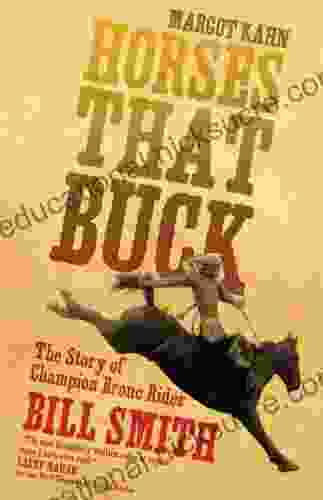
 Craig Blair
Craig BlairThe Story of Champion Bronc Rider Bill Smith: A Legacy of...
In the annals of rodeo...

 H.G. Wells
H.G. WellsAmazing Real Life Stories In The News
The news is often...

 Jordan Blair
Jordan Blair35 Wellness Walks to Expand Awareness, Increase Vitality,...
In an era where technology...
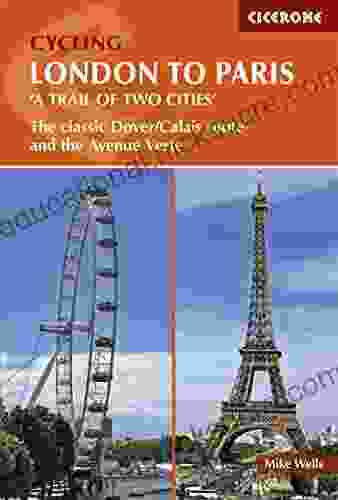
 Edward Reed
Edward ReedCycling London to Paris: An Epic Adventure in the Making
Are you ready for the...
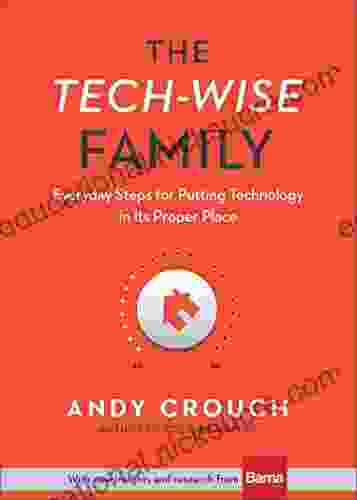
 Edgar Hayes
Edgar HayesEveryday Steps For Putting Technology In Its Proper Place
Are you constantly...

 Mitch Foster
Mitch FosterSat Math Mastery Advanced Algebra Geometry And Statistics
SAT Math Mastery Advanced Algebra Geometry...
4.6 out of 5
| Language | : | English |
| File size | : | 8419 KB |
| Text-to-Speech | : | Enabled |
| Screen Reader | : | Supported |
| Enhanced typesetting | : | Enabled |
| Word Wise | : | Enabled |
| Print length | : | 283 pages |


